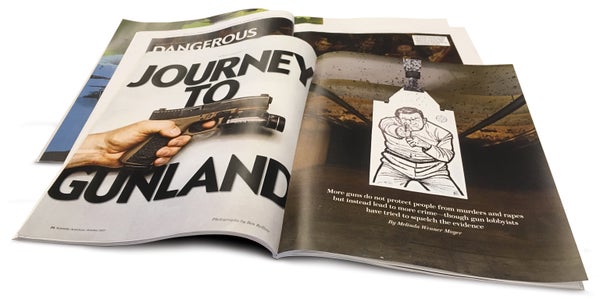Whether they are advancing discovery or being applied to help address societal problems, the process and products of research offer tremendous human benefits. Maybe that is why I struggle to understand how the rise of populism, with the root of “popular,” coincides with a seeming increase in antiscience sentiments. Changes in U.S. leadership after the 2016 election have brought budget cuts and even the outright redacting of scientific information related to topics such as climate change. The British exit, or “Brexit,” from the European Union is similarly impinging on the work of scientists. Meanwhile China is strongly supporting clean energy, quantum satellites and genomics as an engine of economic growth and political strength. What are we to make of these changes, just when it seems the world needs science most?
Our annual special report on the “State of the World's Science,” provides an essential analysis. One key for science, I expect, is how we all talk about it. It's been troubling me for some time that I myself always, in my Pollyanna way, greet new developments with hope and excitement—whereas others may worry about the possibility of job losses or, as in the case of genetics research, may feel moral qualms. As journalist Brooke Borel writes in “Message Control,” “researchers must be willing not only to hear the public's confusion and pushback but also to adapt.”
This issue is a veritable feast of what science can do for us if we are willing to engage with it. Let me list the ways. Do guns really keep us safe? “Journey to Gunland,” by journalist Melinda Wenner Moyer, compiles the evidence. Is the wild pet trade good for conservation? (Spoiler alert: no.) See “Loved to Death,” by journalist Richard Conniff. How did surgery shift from the “butchering art” to modern healing? Medical historian Lindsey Fitzharris explains in “Dangerous Medicine.”
On supporting science journalism
If you're enjoying this article, consider supporting our award-winning journalism by subscribing. By purchasing a subscription you are helping to ensure the future of impactful stories about the discoveries and ideas shaping our world today.
On the “awe and wonder” front, delights await. Planetary scientist Carolyn Porco provides a fantastic survey of what we have learned from the famous exploration mission in “Cassini at Saturn.” In our cover story, “The Neutrino Puzzle,” senior editor Clara Moskowitz ventures underground, to a cave at the Fermi National Accelerator Laboratory outside Chicago, where “trillions of neutrinos are flying through every inch of my body each second.” Most zip through the empty spaces within all matter on our planet, unimpeded. In Illinois, and at another detector 800 kilometers away in Minnesota, on occasion a neutrino collides with an earthbound atom, creating a tiny flash that is nonetheless visible to scientists. Not only are we made of “starstuff,” as Carl Sagan put it, we also temporarily host bits of the universe within.
